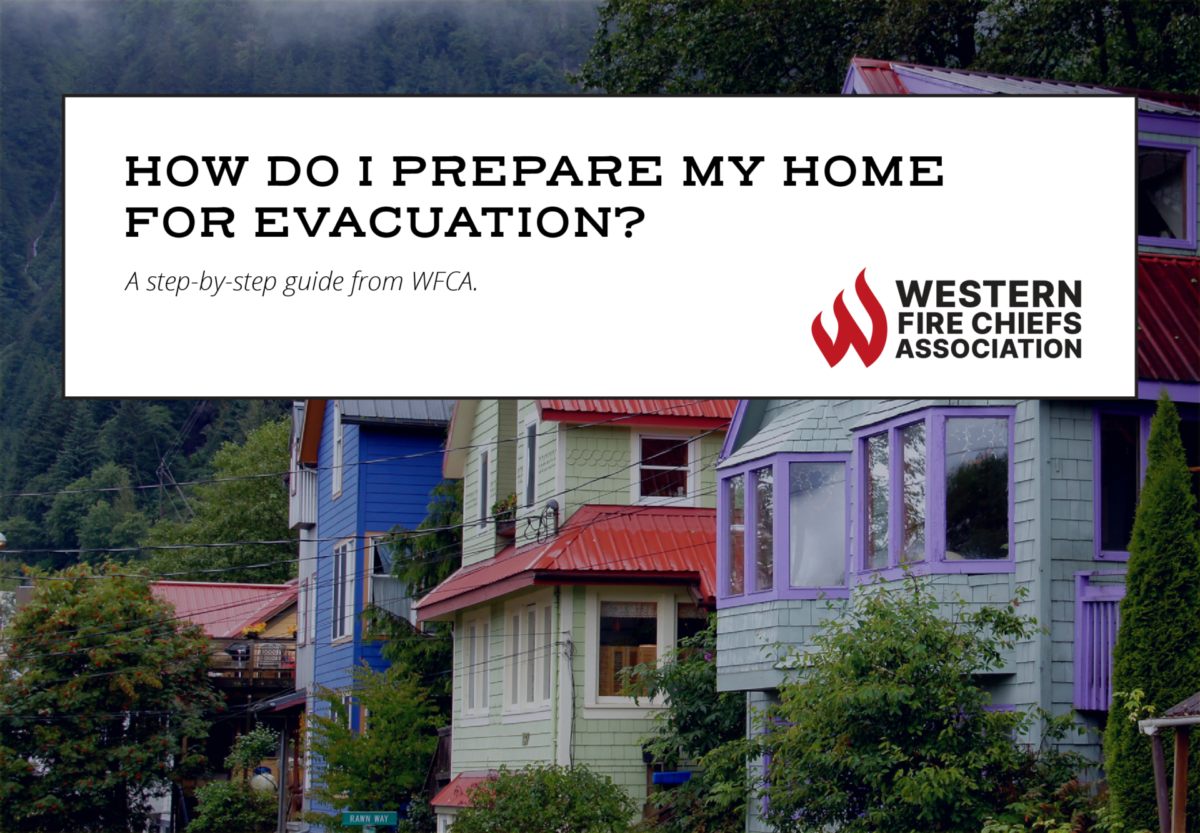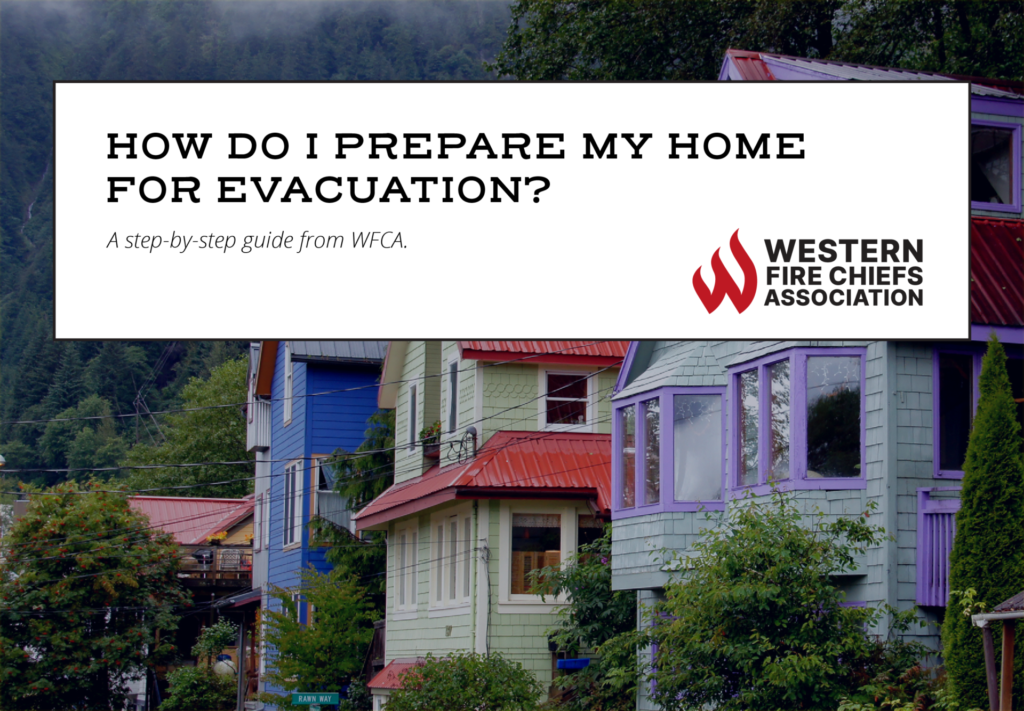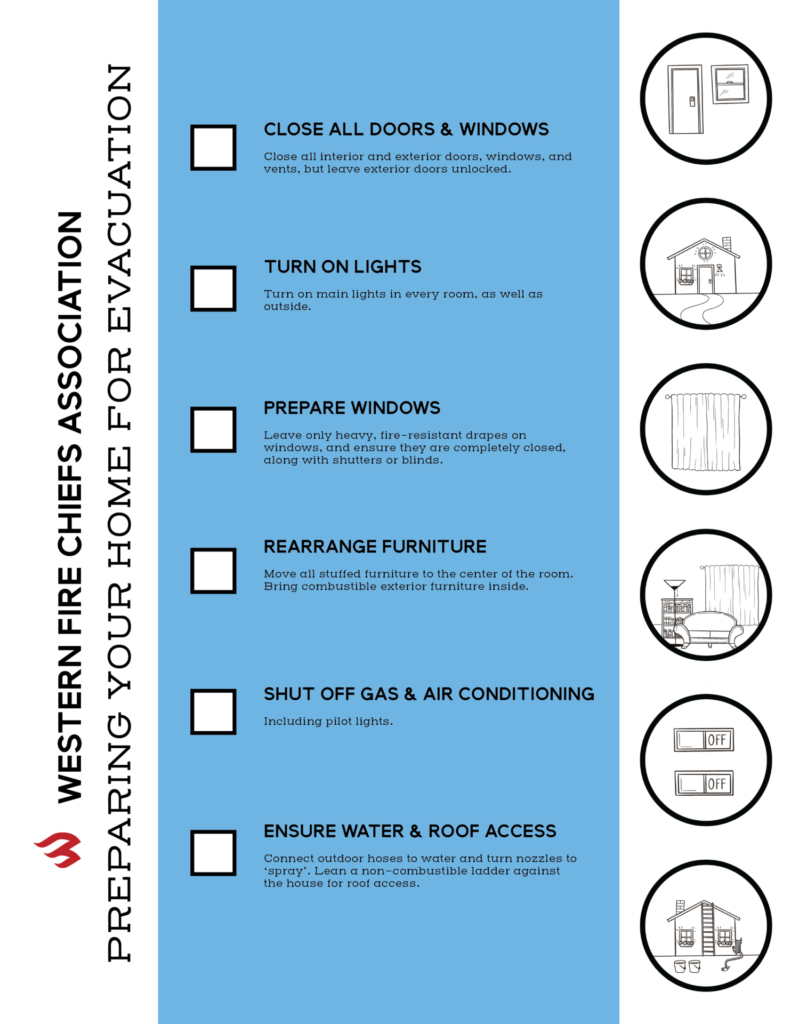Fire Pit Safety Tips
Stay safe around the campfire with tips from the Western Fire Chiefs Association. Learn essential precautions and practices for a worry-free outdoor campfire.
Learn how to prepare your home for wildfire evacuation. The Western Fire Chiefs Association (WFCA) will share their guidance to help ensure your home is safe.
Published:September 27, 2022
Edited:February 26, 2024

Learn how to prepare your home for wildfire evacuation. The Western Fire Chiefs Association (WFCA) will share their guidance to help ensure your home is safe.

Wildfires can occur anywhere and spread well beyond natural areas like forests or prairies. They can wreak havoc in neighboring communities and destroy homes, businesses, and infrastructure. Luckily, there are steps you can take to prepare your home for a fire evacuation and increase its chances of survival in case of a wildfire:
Close all the exterior doors, windows, and vents. If you have time, cover windows, vents, and attic openings with plywood that is at least one-half inch thick. While closed, any exterior doors and gates should be left unlocked to allow firefighters easy access to your home.1
Inside the house, keep the interior doors closed as well. Furthermore, any pet doors and fireplace dampers should be closed or blocked off.1
Turn on a light in every room, as well as outside the house. This is an important step, as it will help firefighters to see your house more clearly in smoky conditions.1
Take down all lightweight, non-fire-resistant curtains and remove any other combustible materials from around the windows. If you have heavier, fire-resistant drapes, close them completely. Close blinds and shutters as well.1
All stuffed furniture inside the home, like couches and armchairs, should be moved to the middle of the room. If you have any combustible outdoor furniture on your patio, move it inside the house or into the garage.2
Finally, outdoor propane BBQ appliances should be moved away from structures.3

When preparing your home for a wildfire evacuation, do not forget to close off your natural gas supply at the meter or shut off propane at the tank. Air conditioning and pilot lights should be turned off as well.1
Make sure that all the garden hoses outside of the house are connected to water. Don’t forget to attach nozzles and set them on “spray,” so that they are ready to go if need be. It is also a good idea to fill buckets and trash cans with water and place them in plain sight so firefighters can easily find them.1
To help firefighters access the roof, prop a non-combustible ladder against the house.2
Even before a wildfire risk becomes imminent, consider creating a Firewise USA® site. This turns any natural or landscaped area around a home into a zone designed to increase the structure’s chances of surviving a wildfire. The goal is to remove any pathways for a wildfire to burn into your home and separate the building from any trees, grass, or shrubs nearby.
When the fire is near, acting quickly can save your life and protect your property from destruction. Follow these steps on how to prepare your home for wildfire evacuation to ensure that you and your family can return safely once the fire has passed.
Stay safe around the campfire with tips from the Western Fire Chiefs Association. Learn essential precautions and practices for a worry-free outdoor campfire.
Discover essential firework safety tips to ensure a dazzling display without accidents. Learn how to celebrate responsibly with expert guidance from WFCA.
Explore the role of AI in wildfire prediction with guidance from the WFCA. Learn how advanced algorithms and data analytics enhance early detection and response.